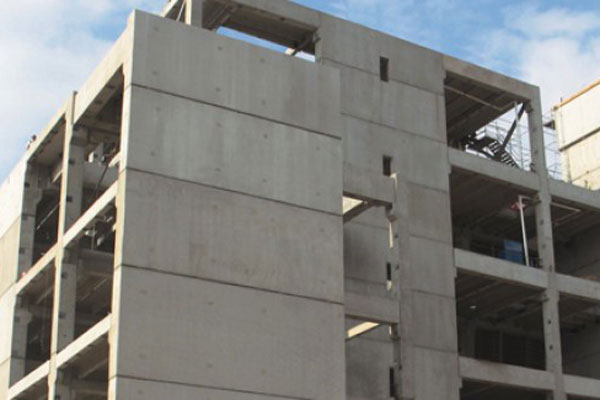
The cisterns were kept secret and were one of the reasons the Nabataea were able to thrive in the desert. They later discovered the advantages of hydraulic lime - that is, cement that hardens underwater - and by 700 BC, they were building kilns to supply mortar for the construction of rubble-wall houses, concrete floors, and underground waterproof cisterns. The first concrete-like structures were built by the Nabataea traders or Bedouins who occupied and controlled a series of oases and developed a small empire in the regions of southern Syria and northern Jordan in around 6500 BC. The ingredients of concrete and their proportions are called the design mix. These forces may be gradual or intense, they may come from above (gravity), below (soil heaving), the sides (lateral loads), or they might take the form of erosion, abrasion or chemical attack. The performance characteristics can change according to the different forces that the concrete will need to resist. Concrete is a composite building material and the ingredients, of which cement is just one, have changed over time and are changing even now. About 12 million years ago in what is now Israel, natural deposits were formed by reactions between limestone and oil shale that were produced by spontaneous combustion. This wasn’t concrete, but it was the beginning of the development of cement.Įarly cementicious composite materials typically included mortar-crushed, burned limestone, sand and water, which was used for building with stone, as opposed to casting the material in a mold, which is essentially how modern concrete is used, with the mold being the concrete forms.Īs one of the key constituents of modern concrete, cement has been around for a long time. The precursor to concrete was invented in about 1300 BC when Middle Eastern builders found that when they coated the outsides of their pounded-clay fortresses and home walls with a thin, damp coating of burned limestone, it reacted chemically with gases in the air to form a hard, protective surface.

Admixtures are chemicals added to the concrete mix to control its setting properties and are used primarily when placing concrete during environmental extremes, such as high or low temperatures, windy conditions, etc.


Today’s concrete is made using Portland cement, coarse and fine aggregates of stone and sand, and water. Over thousands of years, these materials were improved upon, combined with other materials and, ultimately, morphed into modern concrete. When sand and water were added to these cements, they became mortar, which was a plaster-like material used to adhere stones to each other. Lime also refers to crushed, burned limestone. The time period during which concrete was first invented depends on how one interprets the term “concrete.” Ancient materials were crude cements made by crushing and burning gypsum or limestone. By Nick Gromicko, CMI® and Kenton Shepard


 0 kommentar(er)
0 kommentar(er)
